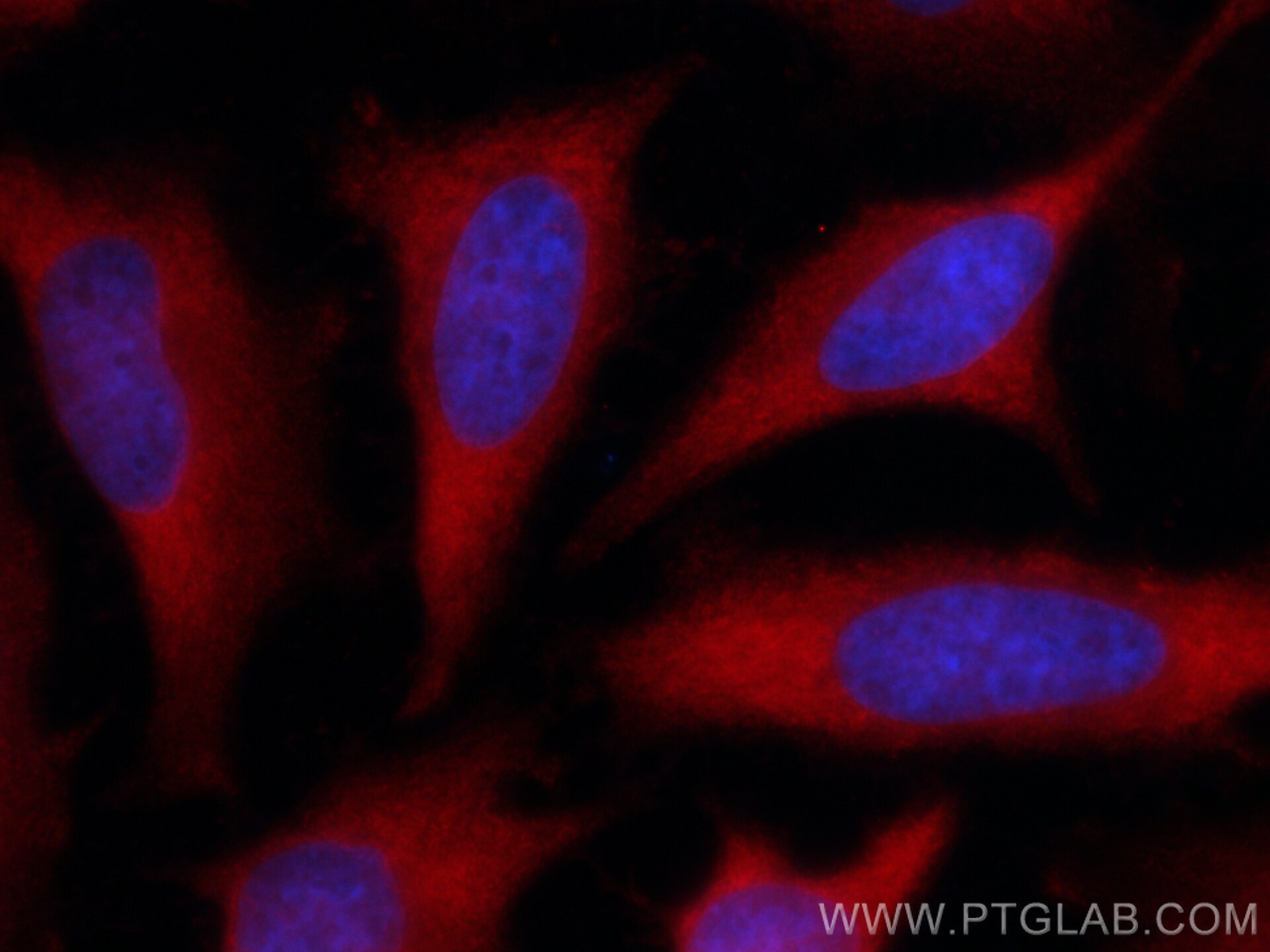Anticorps Monoclonal anti-GART
GART Monoclonal Antibody for
Hôte / Isotype
Mouse / IgG1
Réactivité testée
Humain, rat, souris
Applications
Conjugaison
CoraLite®594 Fluorescent Dye
CloneNo.
2A11E2
N° de cat : CL594-67939
Synonymes
Galerie de données de validation
Applications testées
Dilution recommandée
| Application | Dilution |
|---|---|
| It is recommended that this reagent should be titrated in each testing system to obtain optimal results. | |
| Sample-dependent, check data in validation data gallery | |
Informations sur le produit
CL594-67939 cible GART dans les applications de et montre une réactivité avec des échantillons Humain, rat, souris
| Réactivité | Humain, rat, souris |
| Hôte / Isotype | Mouse / IgG1 |
| Clonalité | Monoclonal |
| Type | Anticorps |
| Immunogène | GART Protéine recombinante Ag30509 |
| Nom complet | phosphoribosylglycinamide formyltransferase, phosphoribosylglycinamide synthetase, phosphoribosylaminoimidazole synthetase |
| Masse moléculaire calculée | 1010 aa, 108 kDa |
| Poids moléculaire observé | 46 kDa, 108 kDa |
| Numéro d’acquisition GenBank | BC038958 |
| Symbole du gène | GART |
| Identification du gène (NCBI) | 2618 |
| Conjugaison | CoraLite®594 Fluorescent Dye |
| Excitation/Emission maxima wavelengths | 588 nm / 604 nm |
| Forme | Liquide |
| Méthode de purification | Purification par protéine G |
| Tampon de stockage | PBS avec glycérol à 50 %, Proclin300 à 0,05 % et BSA à 0,5 %, pH 7,3. |
| Conditions de stockage | Stocker à -20 °C. Éviter toute exposition à la lumière. Stable pendant un an après l'expédition. L'aliquotage n'est pas nécessaire pour le stockage à -20oC Les 20ul contiennent 0,1% de BSA. |
Informations générales
GART is a trifunctional polypeptide which has phosphoribosylglycinamide formyltransferase, phosphoribosylglycinamide synthetase, phosphoribosylaminoimidazole synthetase activity that is required for de novo purine biosynthesis. GART has 2 isoforms with molecular mass of 108 kDa and 46 kDa due to alternative splicing.
Protocole
| Product Specific Protocols | |
|---|---|
| IF protocol for CL594 GART antibody CL594-67939 | Download protocol |
| Standard Protocols | |
|---|---|
| Click here to view our Standard Protocols |


